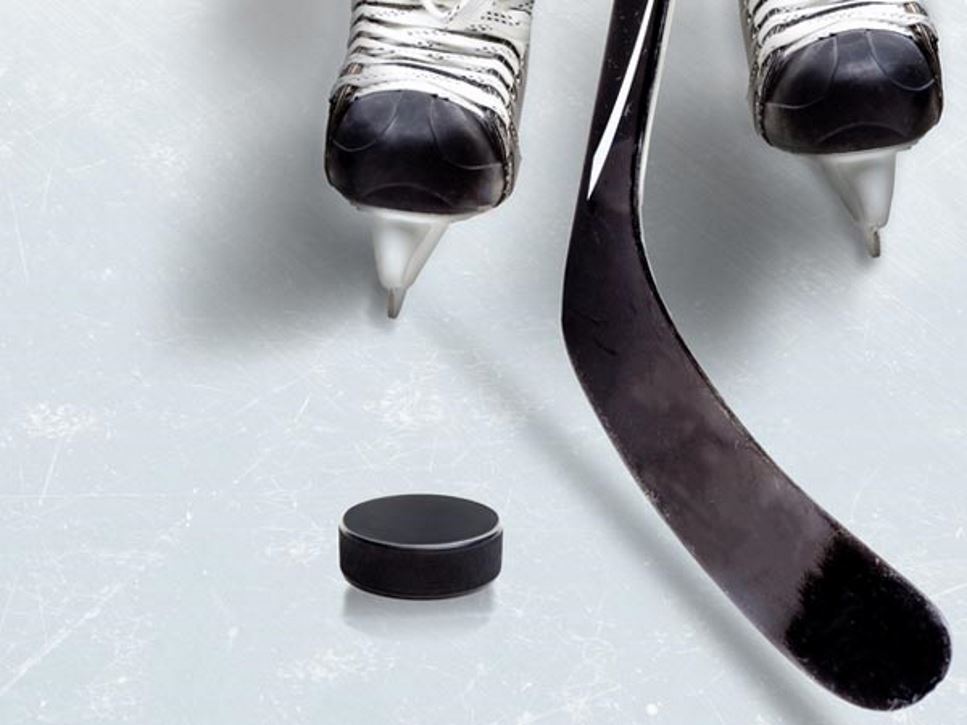When it comes to fueling the body, the demands of high school ice hockey players are high. Speeding explosively across the ice requires muscle strength, endurance and superior skating skills. Consuming optimal foods and fluids, both on and off the ice, is essential to sustain energy levels throughout the school day, during practice and in preparation for competition.
Hockey training, muscle building and growth require plenty of calories — most of which come from carbohydrates. That's because both on-ice and weight room workouts are predominantly fueled by muscle carbohydrate, or glycogen, and need to be replenished between daily training sessions. For optimal recovery, include healthful sources of carbohydrates such as whole grains, low-fat or fat-free milk and yogurt, fruits and vegetables. Try adding whole-grain cereals, breads and pasta, potatoes and winter squash to meals. Low-fat yogurt cups and fruit are quick and easy snack choices.
Daily protein requirements can easily be met from a well-balanced eating plan that includes adequate amounts of poultry, fish, lean red meat, low-fat cheese, milk and yogurt, and plant-based protein such as beans. But to maximize muscle building and recovery, consider the specific nutrient-timed choices outlined below:
- Aim for a snack that provides 15 to 20 grams of high-quality protein plus 25 grams of carbohydrate one hour before resistance training. For example, this could come from 2 cups of low-fat milk. Add another 25 grams of carbohydrate, such as a large banana, if the weight training session is followed by ice time practice. Pre-hydrate with 16 to 24 ounces of fluid which may include the milk.
- After weight training, rehydrate with 20 ounces of fluid for every pound of weight lost during practice. Replenish after your workout with a snack that provides 20 grams of high-quality protein and at least 50 grams of carbohydrate, such as a high-protein smoothie or a sports bar.
- Follow practice or a game with a meal about two hours later. Aim for a meal with about a quarter of your plate coming from protein foods and half your plate made up of whole-grain carbohydrates such as whole-grain pasta or brown rice. The remaining quarter of your plate should be filled with vegetables or fruit.
Protein foods to choose before and after weight training may include low-fat or fat-free yogurt, cottage cheese, plain milk or fortified soy milk, cooked chicken, eggs, lean red meat, peanut butter, tuna, tofu and tempeh. High-protein energy bars are easy to pack and convenient when other foods aren't available. Read labels — look for products that provide 10 grams of protein and avoid those containing high amounts of saturated fat or added sugars.
Hydration on the ice also is essential to minimize the performance-draining effects of dehydration. For workouts lasting more than 75 minutes, consume a sports drink at the rate of 5 to 10 fluid ounces every 15 to 20 minutes.
For individualized nutrition guidance, consult a registered dietitian nutritionist who specializes in sports nutrition. To find a dietitian in your area, search the Academy's Find a Nutrition Expert database.
References
Find a Nutrition Expert
Looking for credible nutrition information and recommendations? The Academy of Nutrition and Dietetics' network of credentialed food and nutrition practitioners are ready to help!


